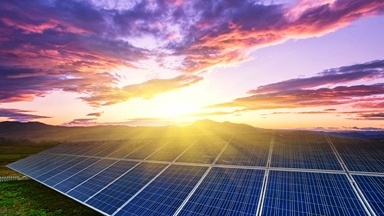Loading component...
At a glance
By calling on our strengths, Australia is well positioned to reach renewable energy superpower status and, at the same time, meet Prime Minister Albanese’s target of net zero by 2050, says Dr Steve Hatfield-Dodds, research leader at the EY Net Zero Centre.
“The world is moving away from fossil fuels and toward electricity,” Hatfield-Dodds says.
“Australia has plenty of low-cost, renewable energy resources such as wind and solar. We’re also rich in minerals like iron ore, copper and lithium.
“It will be the combination of both strengths that will potentially put us at the front of the pack.”
While Australia’s mature energy infrastructure can make the nation competitive on a global scale, there is much more to do before that becomes a reality, Hatfield-Dodds says. It’s not just about building solar and wind farms.
“We’re already very good at solar and wind, and we’re beginning to move into offshore wind,” Hatfield-Dodds says.
“But to finish the job we need to lift our game around firming the ability to supply energy when the sun isn’t shining and the wind isn’t blowing, particularly via pumped hydro and batteries.”
Taking a long-term view is essential for Australia to achieve superpower status.
“This is an opportunity that will take decades to reach its full potential,” Hatfield-Dodds says.
“If you’re playing in that space, you must be confident that it’s still going to be there when you finish the job.”
Patrick Viljoen, senior manager ESG at CPA Australia, says that if we’re to be true leaders in renewables, we must provide leadership within our region.
“It’s not good enough for Australia to have the view that, as long as we’re on the right track, everything is fine,” Viljoen says.
“We have to take our neighbours along on the journey.”
Viljoen welcomes the Labor government’s narrative switch to include a focus on funding renewable pathways.
“The Labor policy is good because it has money attached to it,” Viljoen says.
“We’re definitely moving in the right direction. Unless you apply funding to a policy, it’s doomed to failure.”
While the renewables future is potentially bright, several essential steps must be taken before the PM’s superpower dream becomes a long-term reality.
Deliver zero-emissions electricity
Australia must accelerate the increase of our current renewable supply, Hatfield-Dodds says.
“We need to roll out at scale cost-competitive, zero-emissions electricity generated by wind and solar,” he says. “That’s not beyond us.”
Hatfield-Dodds says the Queensland Government’s recent announcement targeting 80 per cent renewable energy by 2035, and the closure of government-owned, coal-fired power stations to make room for renewable energy hubs, is a good start.
Create an attractive investing environment
“It’s been a long time since Australia has encouraged big investment,” Hatfield-Dodds says. “We’ve not been competitive in this area for a while.”
“People want to be confident when they’re investing that the investment environment is going to remain conducive for a long time.”
Part of this, Hatfield-Dodds says, will involve determining what long-term demand will look like.
Australia will have to “really go for it”, using what we already have at hand. A case in point is iron ore.
“There’s huge potential for investing in Australian iron and steel,” he says.
“Australia currently produces less than 1 per cent of the world’s iron and steel. We could increase our production 100-fold and demand would still be there.”
Of course, that steel production must be green.
Be a green steel leader
Currently, no country is producing green steel at scale, Hatfield-Dodds says. This is an area where Australia could excel.
“Australia is very good at applied innovation,” he says.
“If we crack the innovation challenges, we could export both green steel and industry know-how. This would provide significant employment potential, particularly in engineering.”
The climate finance opportunity
Recognition that developing nations do not share our financial or resource capacity to drive initiatives is vital, says Viljoen.
“We must examine how we provide funding that ensures our neighbours can transition into low-carbon energy production,” he says.
“Australia must lead Oceania into the renewable energy space.”
This includes taking financial responsibility. Viljoen sees climate finance as an area in which Australia is lagging.
“There’s an allocation of money earmarked by developed economies to help take developing economies along on the net zero journey,” he says.
“But only a paltry amount of that financing has been made available. Noting the fact that developed nations caused much of the global warming crisis, it’s important for us to fund the transition.”
End the coal obsession
Once our own emissions begin to decrease, we must also acknowledge the emissions created by the coal we’re exporting, Viljoen says.
“Our carbon shadow is immense because of the burning of Australian coal in foreign jurisdictions,” he says.
“So, we have to lower emissions and stop exporting at the same time.
“We need to recognise our responsibility to Asia and Oceania. But we can’t do that unless we cut that umbilical cord with coal.”

